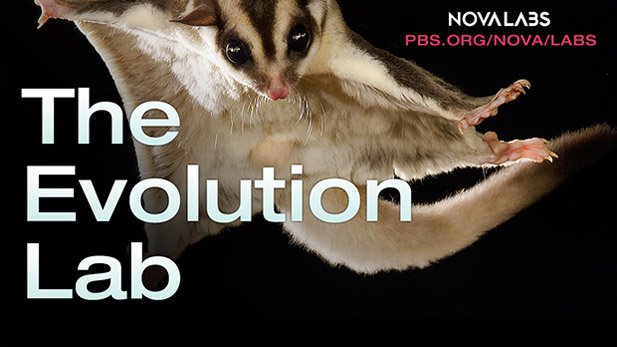“Evolution isn’t just a story about where we came from. It’s an epic at the center of life itself.” – Kenneth R. Miller, Biologist, Brown University
If you are reading this sentence, you’re presumably a member of the species Homo sapiens, one of somewhere between 5 and 100 million distinct types of organisms living on Earth today. Incredibly, the story of how you are related to all of those species—and millions upon millions more that have gone extinct over the 3.5 billion year history of life on Earth—can be summarized in an enormous family tree. To help you explore this tree and understand the amazing mechanism behind it, we’ve created the Evolution Lab .
With the support of the Biogen Foundation, the groundwork laid by the Life on Earth project , and the expertise of our scientist advisors , the Evolution Lab is now the 6th Lab on the NOVA Labs platform.
Play the Evolution Lab and you’ll be on your way to becoming an expert in phylogenetics—the study of the evolutionary relationships among species. The information and concepts you learn along the way will provide a strong foundation for pursuing any topic in the life sciences, from astrobiology to zoology. As Russian biologist Theodosius Dobzhansky noted in the title of his 1973 essay, “Nothing in biology makes sense except in light of evolution.”
The Evolution Lab features two interactive digital learning tools—made available online for the first time here—developed by the Life on Earth project based at Harvard University’s School of Engineering and Applied Sciences. “Understanding phylogenetic trees can be difficult, but we’re working to make it more accessible,” says principal investigator Chia Shen, director of Scientists’ Discovery Room (SDR) Lab. Shen’s team worked for several years to develop Deep Tree, “an open-ended space to explore the common ancestry of all species and understand how life continues to evolve.” Florian Block, lead developer of NOVA’s web version of Deep Tree, notes that today most computers and mobile devices have enough power to run interactive visualizations from huge datasets. “Working with NOVA to make our work accessible to virtually anyone with Internet access is exciting—we want as many people as possible to experience some of the evolutionary wonders contained in the tree of life.”
Trace the shared ancestry of over 70,000 species in Deep Tree.
The other tool that came out of their research is a puzzle-based game called Build A Tree, in which players create their own phylogenetic trees from a set of species and a list of shared traits. “Games can be powerful tools for giving people a motivating and structured learning experience,” says Michael Horn, an assistant professor of computer science and learning science at Northwestern University and co-principal investigator for Life on Earth. “But for us, it’s more about providing a really challenging problem in a context where it’s fine to fail over and over again as an integral part of the learning process, as you puzzle through quandaries that real scientists have wrestled with over the centuries.”
Begin your exploration by watching our introductory video entitled “Evolution 101” for an overview of evolution, going back to its discovery by Charles Darwin (and Alfred Russel Wallace, just a little late to the party). Then you’ll be ready to put your understanding to the test by playing our version of the tree of life.
